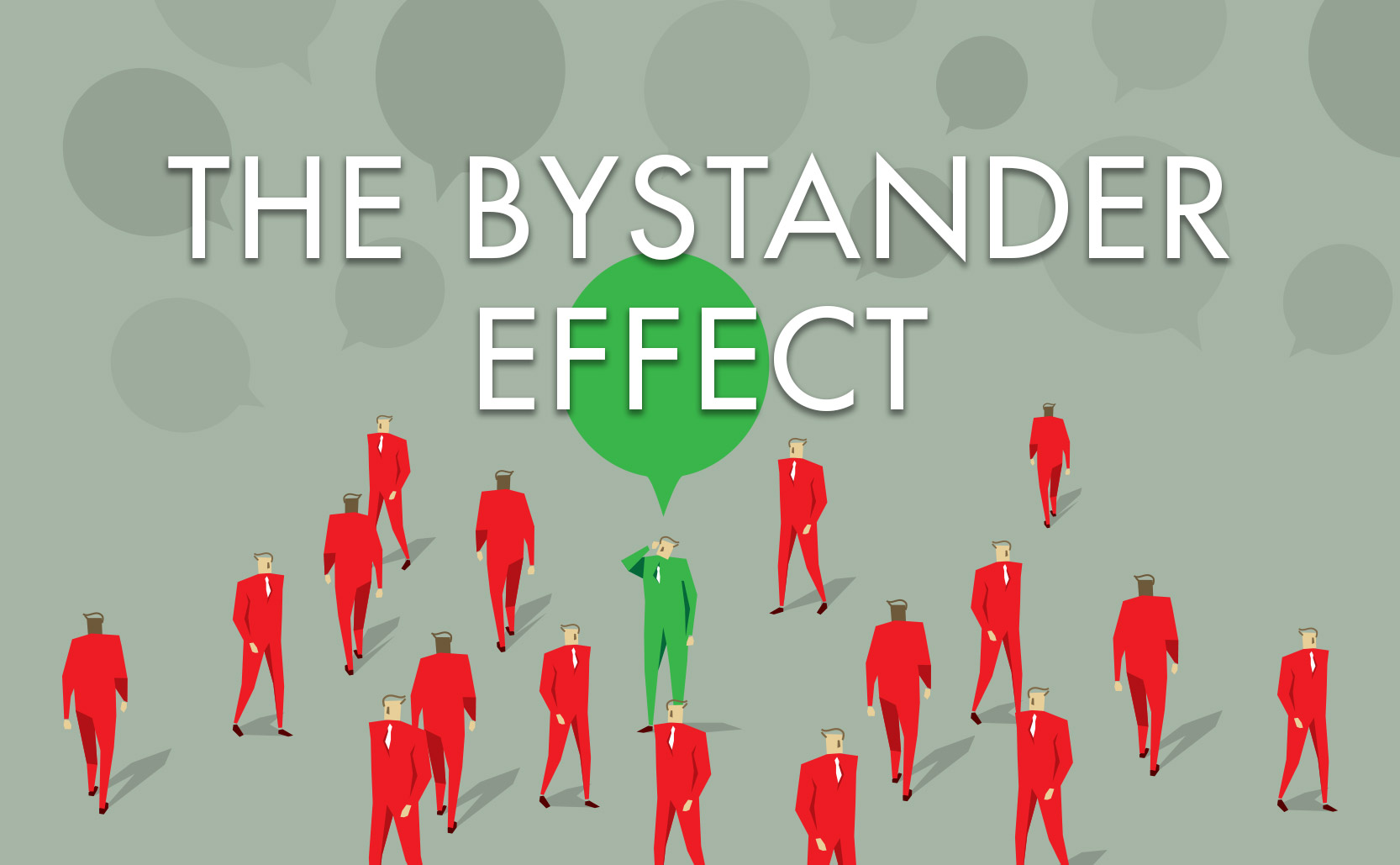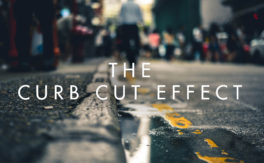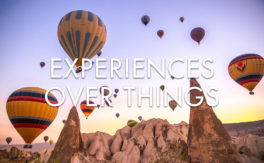In larger groups people become less likely to help. When people are waiting for someone to do something, maybe you’re the person who should do something.
The bystander effect is a psychological theory where, the more people who are present the less likely someone is to help a person in need. Alone you would probably help but in a crowd you just expect someone else to do something. We regularly hear stories in the news or have examples in our own lives of situations that could have been avoided if someone in the crowd had acted – people who knew someone was dangerous but never told the authorities, people who witness harassment at work but never speak up, the driver broken-down on the side of the highway that everyone drives past, etc.
Part of why this happens is a “diffusion of responsibility” where members of a crowd feel less responsible to take action. “There are so many people here I bet someone else has already called an ambulance” or “someone else is probably more qualified to help”. Of course, if everyone assumes someone else will take action then nobody does.
Another reason this happens is social influence. People look around and take their cues from how others are behaving. We’re social creatures and most of us don’t like to go against the crowd. We try and fit in by doing what other people are doing. If a crowd of people seem unconcerned by something, and they continue going about their day as usual, you are less likely to go against the crowd and take action.
Less Likely To Help (… Some Conditions Apply)
While it is true that the larger the crowd the less likely someone is to assist, there are some caveats. For example: while we take our cues from how others around us are behaving, and if nobody is helping we are less likely to help, the opposite is also true. If other people are lending a hand then we’re actually more likely to help.
People are also more likely to help when a situation is a clear emergency. Ambiguous situations that aren’t life-threatening aren’t as likely to get assistance as an obvious emergency. Also someone who is trained to assist in an emergency is more likely to intervene. For example a medical professional who regularly helps people is more likely to provide assistance even if the rest of the crowd won’t. We’re also more likely to lend assistance to people who we perceive as part of our in-group, our “uchi” (people wearing the jersey of a team we support, people with political bumper stickers we agree with, etc).
I Need Help
If you find yourself in an emergency and there is a crowd of people, there are things you can do to improve your chances of getting help. The first thing is to make it clear you need help. Remove any ambiguity by clearly stating you need help. Singling people out also improves your chances. Make eye contact with individuals, ask them for help, tell them what you need. Directly appealing to individuals improves your chances of receiving help.
As for being a bystander, remember that you are someone. Instead of waiting for someone else to take action maybe you’re the very someone who should take action. If you were the only person around how would you behave? If you begin to help you increase the chances that other people will join in and help too, canceling out the bystander effect.
Added info: while many examples of the bystander effect exist, the definitive example is the 1964 murder of Kitty Genovese in New York City. Multiple people heard and even saw her being attacked but failed to take action until it was too late. There is a very good Stuff You Should Know episode about this case as well as a documentary.





